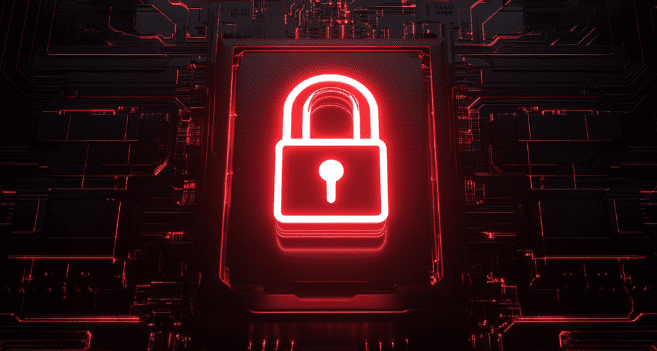Your Proactive Defense Checklist for Phishing Attacks
What keeps you awake at night when thinking about your business’s cybersecurity? If the answer isn’t phishing attacks, perhaps it should be. In today’s digital landscape, these deceptive attempts to steal sensitive information represent one of the most persistent and evolving threats facing businesses of all sizes.
As cybersecurity specialists at Hyperion Networks, we’ve witnessed firsthand how a single successful phishing attack can devastate an unprepared organization. The statistics paint a sobering picture: phishing accounts for 34% of all cybercrime, and 60% of businesses close within six months following a successful attack.
Table Of Contents
- Understanding the Modern Phishing Attack Landscape
- Essential Components of Effective Phishing Protection
- Implementing Phishing Defense Strategies That Work
- Conclusion
- FAQs
But here’s the good news – with the right phishing defense strategy, you can significantly reduce your vulnerability. We’ve created this comprehensive checklist to help you build a robust defense against these increasingly sophisticated threats.

Understanding the Modern Phishing Attack Landscape
The days of obvious scam emails with glaring spelling errors are largely behind us. Today’s phishing attacks are sophisticated, targeted, and often nearly indistinguishable from legitimate communications. What makes these modern threats so dangerous?
Advanced phishing techniques have evolved dramatically in recent years. Adversary-in-the-Middle (AiTM) attacks now use sophisticated phish kits to create proxy servers that intercept credentials even when multi-factor authentication is in place. Device code phishing exploits authentication flows to capture tokens, while OAuth consent phishing leverages malicious links to gain access through third-party applications.
These aren’t just theoretical threats. We regularly help clients recover from these exact scenarios, and the impact extends far beyond the immediate data breach. Financial losses, reputational damage, and operational disruption can persist long after the initial attack.
What would happen if someone gained access to your organization’s email accounts? Consider the cascading effects: access to sensitive client information, financial details, internal communications, and potentially the ability to launch additional attacks from trusted email addresses within your organization.

The most concerning aspect of modern phishing is its targeted nature. Attackers research your organization, identify key personnel, and craft messages specifically designed to exploit your business processes and relationships. This level of personalization makes traditional detection methods increasingly ineffective.
Our managed IT services clients often ask us why phishing remains so prevalent despite advances in security technology. The answer lies in human psychology – these attacks exploit trust, urgency, and natural human tendencies rather than technical vulnerabilities alone.
Essential Components of Effective Phishing Protection
Building effective protection from phishing requires a multi-layered approach that addresses both technical vulnerabilities and human factors. What elements should your phishing protection strategy include?
Strengthening Your Email Authentication Protocols
Email authentication protocols form your first line of defense against phishing attempts. Implementing DMARC (Domain-based Message Authentication, Reporting, and Conformance) allows you to specify how email servers should handle messages that fail authentication checks. This prevents attackers from spoofing your domain in phishing attempts.

SPF (Sender Policy Framework) verification identifies which mail servers are authorized to send email on behalf of your domain, while DKIM (DomainKeys Identified Mail) signatures add a digital signature to outgoing messages that receiving servers can verify. Together, these protocols create a robust framework for email authentication.
We recommend configuring these protocols with strict enforcement policies. While this occasionally requires additional configuration when adding legitimate new email services, the protection it provides far outweighs the minor administrative overhead.
Teaching Your Team How to Identify Phishing Emails
Your employees represent both your greatest vulnerability and your strongest defense against phishing attacks. Regular training on how to identify phishing emails is essential, but traditional annual security awareness sessions aren’t enough.
Effective training includes regular phishing simulations that test employees with realistic but safe examples of phishing attempts. These simulations should be followed by immediate feedback and education when employees fall for the test. This creates a continuous learning environment rather than a once-a-year checkbox exercise.

What specific indicators should your team look for? Teach them to verify sender addresses (not just display names), hover over links before clicking, be wary of unexpected attachments, and question messages that create undue urgency or make unusual requests. Most importantly, establish clear reporting procedures for suspicious messages.
Creating a Robust Phishing Incident Response Plan
Despite your best preventive efforts, you must prepare for the possibility that a phishing attack will succeed. A comprehensive phishing incident response plan ensures you can act quickly to minimize damage.
Your phishing playbook should include:
- Clear definitions of roles and responsibilities
- Step-by-step procedures for containing the breach
- Communication templates for notifying affected parties
- Documentation requirements for potential legal or compliance issues
- Procedures for preserving evidence for investigation
We’ve found that organizations with well-documented and regularly practiced response plans recover significantly faster and with less financial impact than those forced to improvise during a crisis.
Implementing Phishing Defense Strategies That Work
Now that we’ve covered the essential components, let’s build your actionable phishing defense checklist. This represents the comprehensive approach we recommend to our cybersecurity clients:
- Deploy Technical Safeguards
- Implement email authentication (DMARC, SPF, DKIM) with strict enforcement policies
- Enable advanced threat protection with AI-powered email filtering
- Implement multi-factor authentication across all systems and applications
- Adopt a zero trust framework that verifies every access request regardless of source
- Develop Human Defenses
- Conduct regular phishing simulation exercises with immediate feedback
- Provide role-specific training based on each department’s unique risks
- Create clear procedures for reporting suspicious messages
- Recognize and reward vigilant behavior to reinforce security culture

- Establish Monitoring and Detection
- Implement real-time monitoring for unusual email patterns or behaviors
- Conduct regular phishing email analysis to identify emerging threats
- Deploy behavioral analysis tools to detect anomalous user activities
- Establish baseline normal behavior to more easily identify deviations
- Create Response Capabilities
- Develop a detailed phishing incident response playbook
- Assign specific roles and responsibilities for incident handling
- Establish communication channels and decision-making authority
- Practice response scenarios regularly through tabletop exercises
- Review and Improve
- Analyze attempted and successful phishing attacks for lessons learned
- Update defenses based on emerging threat intelligence
- Regularly test security controls through penetration testing
- Measure and track security awareness metrics over time
What makes this approach effective is its comprehensive nature. Many organizations focus exclusively on either technical controls or user training, but true phishing defense requires both working in concert.
When implementing these strategies, prioritize based on your organization’s specific risk profile. Financial services firms, for example, might emphasize advanced technical controls, while organizations with sensitive intellectual property might focus more on insider threat detection.

The most successful implementations we’ve seen share one common factor: executive support. When leadership demonstrates commitment to security through both resources and personal example, the entire organization follows suit.
Conclusion
Phishing attacks continue to evolve in sophistication, but with a proactive defense strategy, your organization can significantly reduce its vulnerability. The checklist we’ve provided offers a framework for building comprehensive protection from phishing that addresses both technical and human factors.
Remember that phishing defense isn’t a one-time project but an ongoing process. Threats evolve, and your defenses must evolve with them. Regular assessment, testing, and improvement are essential components of an effective security posture.
By implementing these recommendations, you’ll not only reduce your risk of falling victim to phishing attacks but also build organizational resilience that extends to other security threats. In today’s threat landscape, that resilience isn’t just nice to have, it’s essential for business survival.
FAQs
How often should we conduct phishing simulation training?
We recommend running phishing simulations at least monthly, with varying levels of sophistication. This frequency keeps security awareness high without creating alert fatigue. The most effective programs start with obvious phishing attempts and gradually increase difficulty as employee awareness improves.
What should employees do if they suspect they’ve clicked on a phishing link?
Employees should immediately disconnect their device from the network (unplug ethernet or turn off Wi-Fi), report the incident to IT security, and not take further actions on the device. Quick reporting can significantly reduce the impact of a successful phishing attempt by allowing security teams to block malicious domains and reset compromised credentials before attackers can exploit them.
How can we protect against phishing attacks that target mobile devices?
Mobile-specific protections include implementing mobile device management (MDM) solutions, requiring the use of secure browsers with phishing filters, restricting app installations to official app stores, and providing specific training on mobile phishing techniques like smishing (SMS phishing) and attacks via messaging apps.
What are the most common indicators that an email might be a phishing attempt?
The most reliable indicators include unexpected attachments, requests for sensitive information, pressure to act quickly, generic greetings, mismatched or suspicious URLs (visible when hovering over links), grammatical errors, and sender addresses that don’t match the claimed identity. No single indicator is definitive, so employees should evaluate the overall context.
How do we balance security with usability when implementing anti-phishing measures?
Finding this balance requires understanding your users’ workflows and implementing controls that provide protection while minimizing disruption. For example, rather than blocking all attachments, implement sandboxing that automatically checks attachments before delivery. Similarly, implement multi-factor authentication methods that offer both security and convenience, such as push notifications rather than complex one-time passwords.
Hyperion Networks – Your Proactive Defense Against Phishing Attacks
→ Advanced cybersecurity solutions to block phishing attempts and scams
→ Proactive monitoring and rapid response to stop threats in real time
→ Employee training and verification processes to minimize phishing risks
⭐⭐⭐⭐⭐ Rated 4.9/5 by Satisfied Clients

About Joe
Joe Ray is a seasoned technology executive with a proven track record of leadership and innovation in the IT and telecommunications industry. As the President and CEO of Hyperion Networks, Joe has been instrumental in guiding the company’s growth and helping businesses leverage advanced technology solutions to meet their evolving needs. With over a decade of experience spanning roles such as Network Engineer, Network Technician, and Network Administrator at companies like Sharp Business Systems, Knox County Schools, and SHIELDS Electronics Supply, Joe’s diverse background brings a wealth of technical and managerial expertise to the table.
Related articles:
A Business Owner’s Guide to Choosing the Right Managed IT Provider

